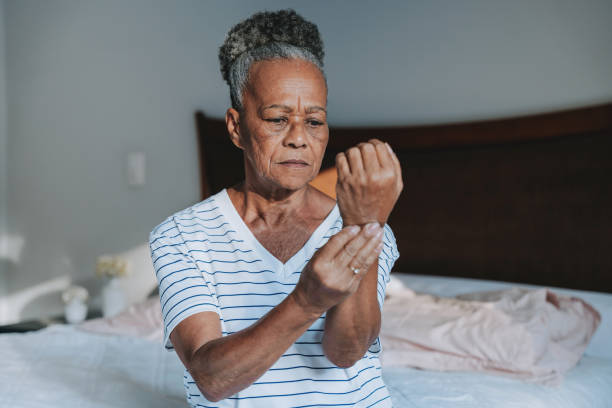Arthritis is one of the most common chronic conditions affecting seniors, impacting millions of individuals worldwide. Characterized by joint pain, stiffness, and reduced mobility, arthritis can significantly diminish a person’s ability to perform everyday tasks. For seniors, these challenges often lead to a loss of independence and a decline in quality of life. While medications and physical therapy provide relief, occupational therapy offers a holistic approach tailored to helping seniors adapt and thrive despite their condition.
Contents
- 1 What is Occupational Therapy?
- 2 Improving Daily Function with Adaptive Techniques
- 3 Reducing Pain and Preventing Injury
- 4 Enhancing Emotional Well-Being
- 5 Facilitating Home Modifications for Safety
- 6 Promoting Social Engagement
- 7 Tailoring Support to Individual Needs
- 8 Conclusion: A Path to Greater Independence
What is Occupational Therapy?
Occupational therapy (OT) focuses on enabling individuals to participate in the activities that matter most to them. For seniors with arthritis, this means regaining the ability to perform daily tasks like dressing, cooking, or gardening, even with physical limitations. Unlike physical therapy, which targets the improvement of physical function, occupational therapy emphasizes adapting the environment and using assistive tools to maintain independence. This personalized approach empowers seniors to continue enjoying their favorite activities safely and comfortably.
Improving Daily Function with Adaptive Techniques
One of the primary benefits of occupational therapy for seniors with arthritis is the introduction of adaptive techniques that make daily tasks easier. An occupational therapist assesses the specific challenges an individual faces and recommends strategies to work around joint pain and stiffness. For example, using tools like jar openers, button hooks, or ergonomic kitchen utensils can reduce strain on the hands and fingers. Additionally, therapists may suggest modifying routines, such as sitting while performing certain tasks or using carts to transport items, to alleviate stress on the joints.
These practical adjustments not only make daily living manageable but also boost confidence and autonomy, allowing seniors to maintain control over their lives.
Reducing Pain and Preventing Injury

Arthritis pain can be debilitating, and repetitive strain from daily tasks often exacerbates symptoms. Occupational therapists work with seniors to identify pain triggers and teach joint protection techniques. These methods include using larger joints for tasks, taking frequent breaks, and maintaining proper posture. By learning how to move safely and efficiently, seniors can minimize discomfort and reduce the risk of further joint damage.
Additionally, therapists may recommend specific exercises that promote flexibility and strength, complementing medical treatments and helping to manage arthritis symptoms holistically.
Enhancing Emotional Well-Being
Living with arthritis can take a toll on mental health, leading to frustration, anxiety, or depression due to reduced mobility and dependence on others. Occupational therapy addresses this emotional aspect by fostering a sense of achievement and independence. Through customized therapy plans, seniors can engage in activities that bring them joy, whether it’s pursuing hobbies, socializing, or participating in community events.
The positive reinforcement and encouragement provided by occupational therapists help seniors rebuild their self-esteem and resilience, creating a more optimistic outlook on life despite their physical limitations.
Facilitating Home Modifications for Safety
For seniors with arthritis, home environments can present significant challenges, from slippery bathroom floors to hard-to-reach kitchen cabinets. Occupational therapists conduct thorough home assessments to identify hazards and recommend modifications that enhance safety and accessibility. These might include installing grab bars in bathrooms, rearranging furniture for easier navigation, or adding non-slip mats.
Such modifications ensure that seniors can move about their homes comfortably and reduce the risk of falls or injuries, allowing them to remain in familiar surroundings for as long as possible.
Promoting Social Engagement
Social isolation is a common issue for seniors with arthritis, as limited mobility can make it difficult to participate in social activities. Occupational therapy helps bridge this gap by encouraging engagement in meaningful activities and facilitating the use of assistive devices for mobility, such as walkers or canes. Therapists may also suggest community programs or virtual platforms that enable seniors to stay connected with friends and family.
By promoting social interaction, occupational therapy helps combat loneliness, which is crucial for maintaining emotional and mental well-being.
Tailoring Support to Individual Needs
No two cases of arthritis are the same, and occupational therapy recognizes this by offering highly personalized care plans. Therapists collaborate closely with seniors, their families, and healthcare providers to develop strategies that align with the individual’s unique challenges and goals. Whether it’s regaining the ability to cook a favorite meal or continuing to participate in a cherished hobby, occupational therapy ensures that the support provided is meaningful and effective.
This individualized approach allows seniors to set achievable goals and celebrate small victories, reinforcing their motivation to stay active and engaged in their daily lives.
Conclusion: A Path to Greater Independence
Occupational therapy offers a powerful pathway for seniors with arthritis to regain control over their lives. By focusing on adaptive strategies, pain management, emotional well-being, and personalized care, occupational therapists empower individuals to navigate their daily routines with confidence and dignity. For seniors facing the challenges of arthritis, occupational therapy is not just about managing symptoms—it’s about unlocking the potential to live a fuller, more independent life.
